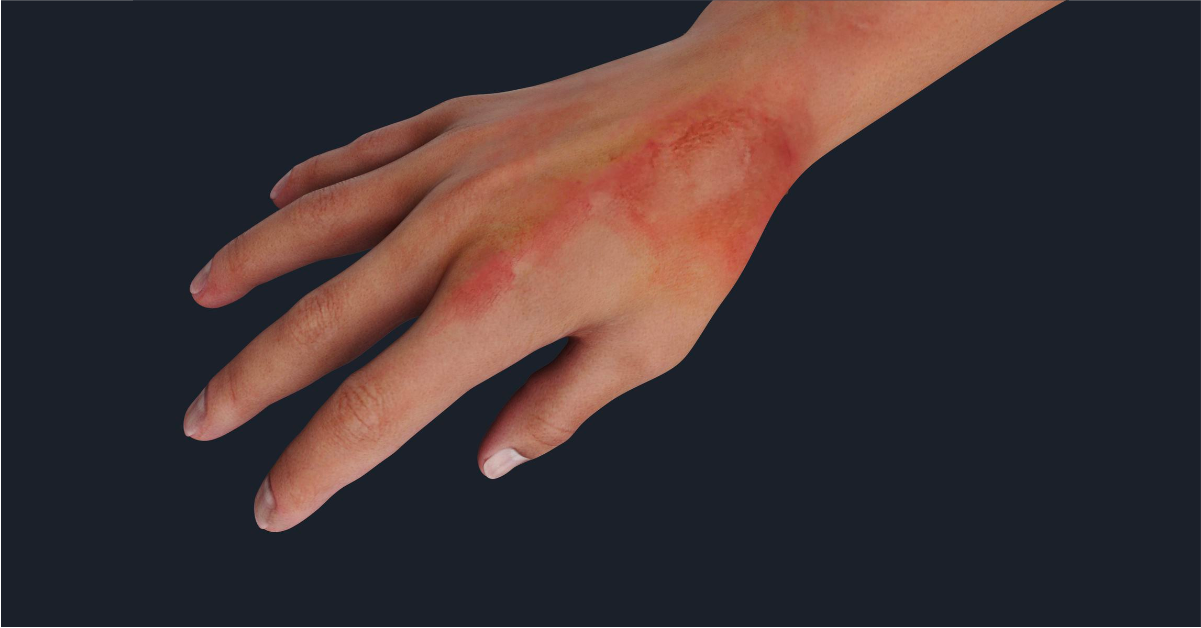
A burn occurs when the skin or tissue is damaged by factors such as heat, radiation, chemicals and electricity. Symptoms of a burn include red or peeling skin, blisters, swelling, pain and white or charred skin.
Burns can be classified by their severity. First-degree burns are the mildest and most superficial, only affecting the epidermis of the skin. Second-degree burns affect the epidermis as well as some of the dermis. Third-degree burns are deeper, damaging both the epidermis and dermis. Finally, fourth-degree burns are the most severe, penetrating the epidermis, dermis and deeper tissue such as muscle and bone. There is often no pain with fourth-degree burns as the nerve endings are damaged.
In response to a burn, the body will initiate an inflammatory response to heal the wound. For example, basophils and mast cells release histamine which will cause vasodilation and increased vascular permeability. This will in turn allow increased blood flow and white blood cells to the burn site. Phagocytic white blood cells are beneficial to the wound as they “eat” bacteria, foreign particles and cell debris. There will also be an increase of other chemicals such as cytokines which help mediate the inflammatory response.
With a large or severe burn, the body’s inflammatory response can sometimes be too intense and act as a detriment to recovery. For example, the body can swell due to accumulation of fluid in a condition known as edema. A serious burn can also cause the patient to enter a life-threatening state of shock in which there is a drop of blood pressure and therefore insufficient oxygen supply to the body.
More severe burns, such as third-degree and fourth-degree burns, can cause permanent changes to the affected area such as scarring. After the inflammatory phase, the burn site undergoes a proliferative phase. This involves the growth of new blood vessels and the development of new connective tissue called granulation tissue. The granulation tissue is remodeled, forming a scar on the skin.
Burns can lead to many other health issues. For example, there is a major risk of infection at the burn site. Burns can damage the skin’s protective barrier allowing foreign bodies to enter the body more easily, leading to infection. It is therefore important that burns receive the proper treatment and care.
Burns can also affect your mental health in the long-term. People who have suffered from burns have reported experiencing anxiety, stress, depression and post-traumatic stress disorder (PTSD). This is especially the case for those who have experienced major burns and scarring.
It is important that burns are treated correctly. Treatment will vary depending on the cause, severity and location of the burn. In the long-term, the patient should receive sufficient follow-up care, especially in terms of mental health.
To learn more about the layers of the skin which can be damaged by burns, you can check out our Skin Detailed Model in Complete Anatomy.
If you don’t have a Complete Anatomy account, be sure to try it for yourself with a FREE 3-day trial.